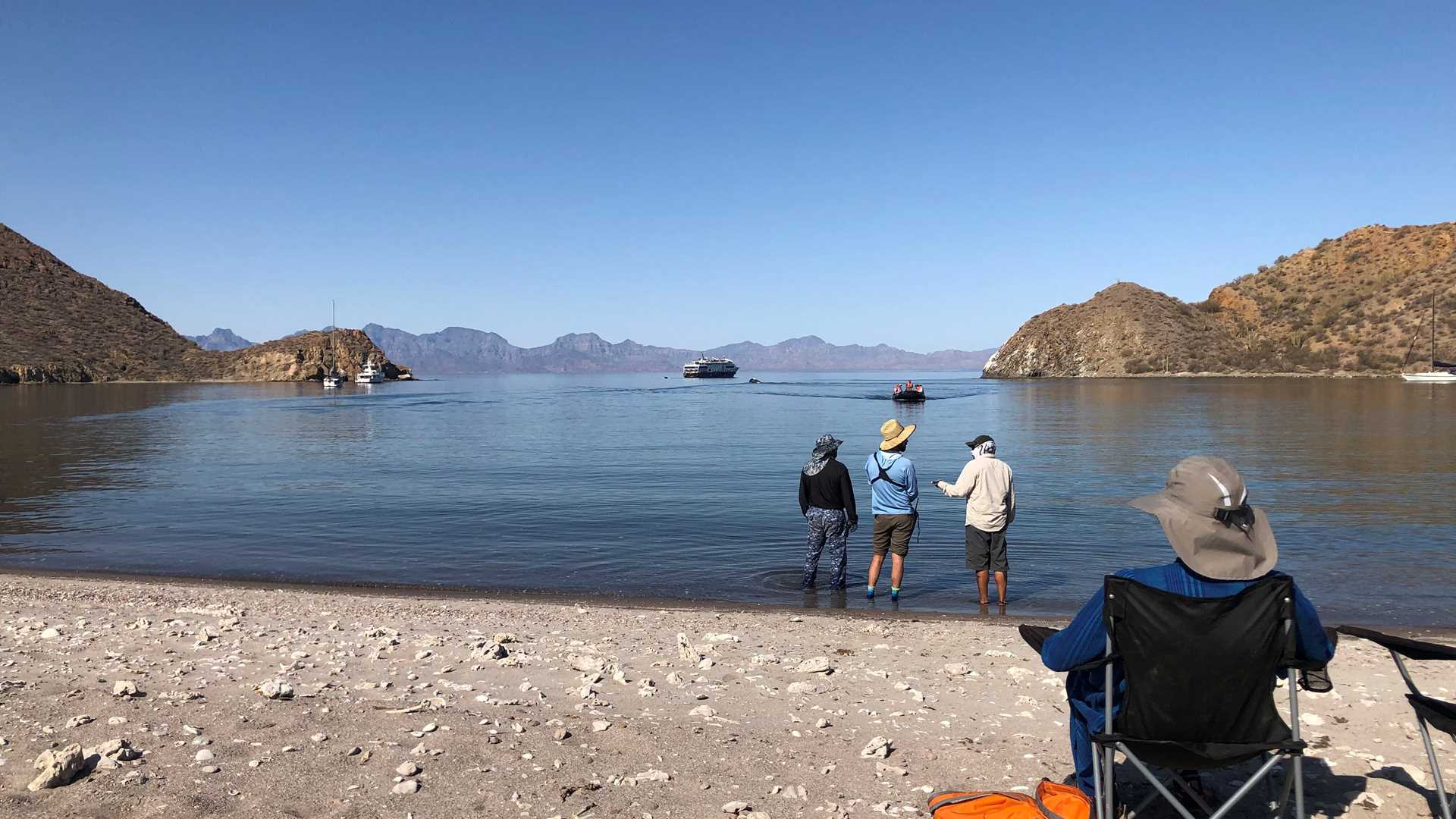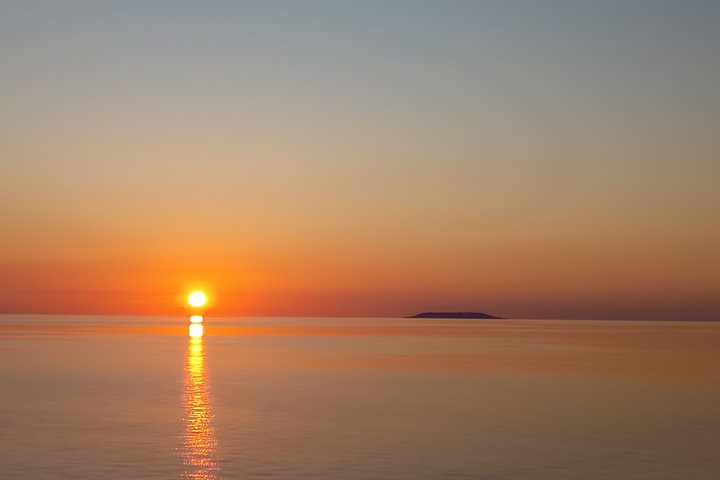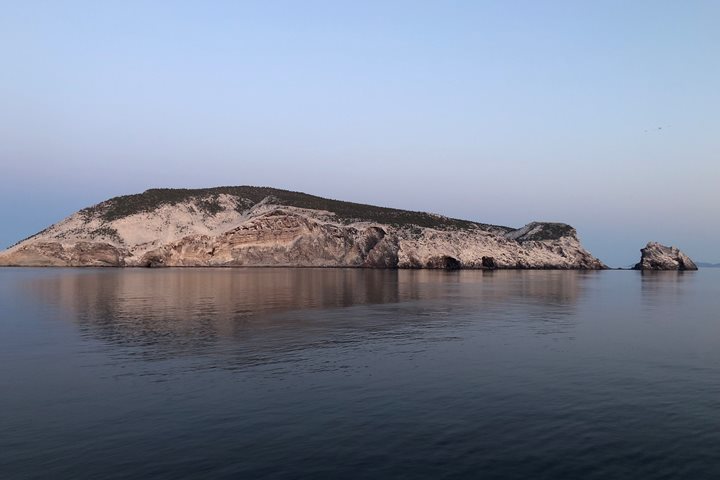Today, on the last full day of our journey, we woke up in the Loreto Bay National Marine Park. Calm winds and clear skies welcomed us to Playa Blandra on the west side of Isla Carmen. We began our day with a series of hikes up the arroyo into the heart of the island. As we ventured into the thick vegetation at the start of the hike, we began to see a variety of plants, lizards, birds, and remnants of bighorn sheep, species that characterize this part of the peninsula. As the day grew warmer, we cooled off by spending time in the shallows of the beach while enjoying a cold beverage. Once we returned to National Geographic Venture, we set out to explore the islands of this park in search of charismatic megafauna. It didn't take long before we were surrounded by hundreds of common dolphins. As our explorations continued, sightings of mobulas, humpback whales, and even hammerhead sharks offered a spectacular way to say goodbye to such a special place in this part of the world.
- Daily Expedition Reports
- 11 Apr 2025
Isla Carmen, 4/11/2025, National Geographic Venture
- Aboard the National Geographic Venture
- Baja California
Hiro Kawashima, Expedition Leader
Born and raised in Ensenada, Baja California, México, Hiro´s heritage can be traced around the world, from Japanese immigrants to adventurous Finnish sailors, French entrepreneurs, and Spanish roots going back to the first settlers of the Peninsula. ...
Read MoreShare Report
Baja California Discovery: Exploring Mexico’s Gulf of California
VIEW ITINERARYRelated Reports
4/9/2025
Read
National Geographic Venture
Isla San Pedro Martir, Isa Rasa & Bahia de Los Angeles
This morning, we awoke east of one of the most isolated islands in the Gulf of California, Isla San Pedro Martir. The abundance of guano here tells the story of the sea's productivity, as this island serves as a nesting ground for a variety of birds that feed on nearby fish. These include brown boobies, blue-footed boobies, red-billed tropicbirds, brown pelicans, and Herrmann's gulls. After circumnavigating San Pedro Martir, we returned to National Geographic Venture and navigated to our next stop, Isa Rasa. The elegant terns were so loud we could hear them as we approached at a great distance: this island hosts nearly 90% of all the world's elegant terns and Heermann's gulls. They’re especially plentiful from April through August, as they form breeding colonies and raise their chicks here. We then continued onward to Bahia de Los Angeles on the Baja California Peninsula. After driving inland for 20 minutes, we pulled aside and began exploring the surreal landscape of this part of the peninsula. Perhaps the most iconic plant species spotted here is the cirio, also known as the boojum tree.






